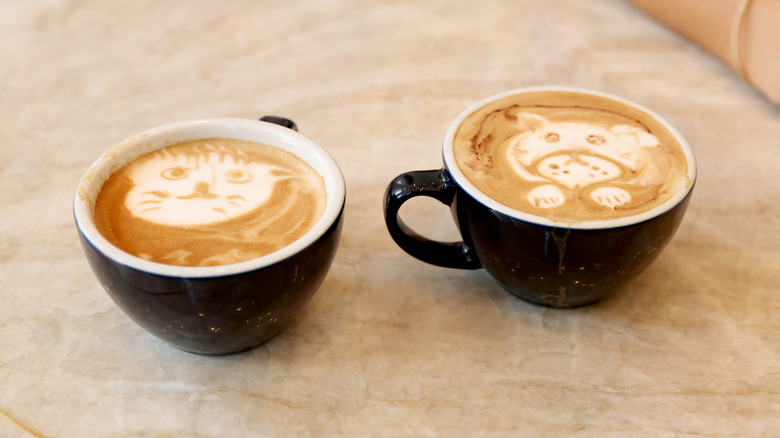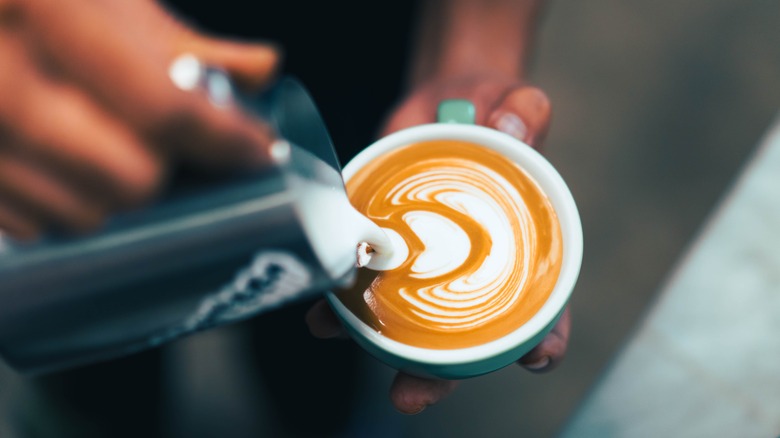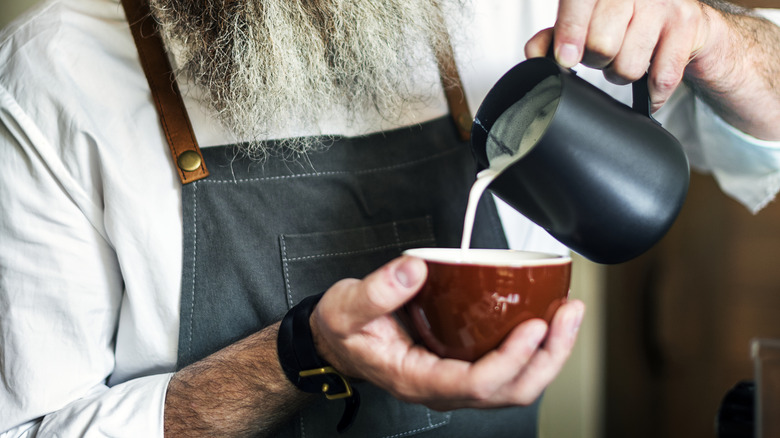What Makes Breve Different From A Café Latte?
If you order a latte on your way to work five days a week, that comes out to at least 200 lattes every year (and that's factoring in two whole months of vacation time). A fun espresso drink can be an uplifting way to get your day started — and statistically speaking, most foodies are already on their way to the café. Per Coffee Affection, in 2023, 66% of U.S. adults drink some type of coffee daily.
With all of the variety, it seems more of that 66% are opting for lattes. According to a comprehensive study by the National Coffee Association, U.S. coffee drinkers ordered lattes a whopping 50% more in 2020 than just five years earlier in 2015. Still, the latte's popularity is nothing new: Folks have been drinking them since as early as the 17th century. But, when you reach the coffee shop counter and give your barista your order, are you asking for a café latte? Or a breve?
Breve lattes and café lattes offer the same caffeine content. Baristas (and artistically inclined home cooks) can still make killer latte art in both drinks. Tulips, rosettes, swans, you name it. You can order both drinks at a traditional coffee shop or a Starbucks drive-thru. So, what makes a breve latte different from a café latte?
Got milk? Café lattes do
In Italian, "café latte" translates to "coffee milk," which is exactly what the drink is. Lattes are fresh, hot espresso (the industry standard is two shots) topped with steamed milk and capped with milk foam. The words "caffe e latte" first appeared in print in an 1867 essay by William Dean Howells titled "Italian Journeys." Shortly after that, in 1884, the world's first espresso machine was patented.
Latte art may not have appeared until the 1980s, but folks worldwide have enjoyed tried-and-true café lattes for years. Still, in the 17th century, latte fans didn't have oat milk. Today, while lattes are traditionally made with whole milk, a drink is still called a "café latte" even if you order it with oat milk or any other plant-based milk alternative. The light, frothy taste of café lattes can be enjoyed hot or iced, and flavorings such as vanilla and mocha, among others, can be added.
Breve lattes are made with half-and-half
Technique-wise, breve lattes (aka café breves) are made the same way as regular café lattes. But, the ingredients change slightly. Instead of milk, breve lattes are made with half-and-half. Otherwise, the steps remain the same. Half-and-half is poured into the pitcher, steamed, and poured over hot espresso shots. Like milk, half-and-half separates into steamed milk and milk foam as it steams, so breve lattes are texturally structured the same as café lattes — espresso topped with steamed half-and-half and capped with foam.
But, when your barista hands you the cup, you might notice that it feels a little heavier than a café latte. As you might imagine, half-and-half makes breve lattes significantly denser. Plus, the thickness of the half-and-half creates a fluffier milk foam on top of the drink. (Imagine a really dense cappuccino.)
Still, as rich as the drink is, it isn't very sweet. While café lattes can be pumped with caramel or other flavors, breve lattes are typically served unsweetened. And while it can certainly be served iced, it's more commonly consumed piping hot as this enhances the creamy mouthfeel and thick texture, which are largely responsible for the drink's appeal.


